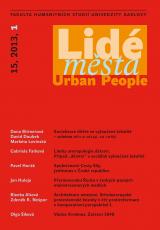Architektura omezení
Středoevropské protestantské kostely v éře protireformace v komparativní perspektivě I.
DOI:
https://doi.org/10.14712/12128112.3490Klíčová slova:
Silesia, Hungary, Czech lands, Protestant architecture, history of architectureAbstrakt
In the 17th and 18th centuries, the Counter-Reformation in the Central European Hapsburg lands led to the full prohibition (Bohemia, Moravia, Alpine lands) or to the wide restriction (Silesia, Hungary) of Protestantism, which included the confiscations of Protestant churches and the imposition of legal restrictions on the construction of new ones. Four types of such "restricted churches" should be identified: (1) Silesian "Churches of Peace", built after the Thirty Years' War, (2) Hungarian "articular" churches, erected according the decision of the Congress of Sopron in 1681, (3) Silesian "churches of mercy", built after the Altranstädt Convention in 1707, and (4) Bohemian, Moravian, Silesian and Hungarian "tolerance churches", erected after the issue of religious Edicts of Tolerance in 1781, before the full emancipation of Austrian Protestants in the mid-19th century. This article is dedicated to the comparative study of church architecture, localizations, inner furnishings and the respective legal restrictions in various lands and times. The first part of the article, published in this issue, provides a general historical outline and a description of three "Churches of Peace" and of 39 "articular" churches, while the next part will cover the two other types of churches and shall address the analytical issues. The authors will discuss (1) the sources and mutual influences of Protestant church architecture in various Central European countries (regions); (2) the sources and mutual influences of the legal restrictions on Protestant church architecture in specific Hapsburg lands; and (3) the questions of who, how and to what degree were these forms/restrictions imposed.
Stahování
Publikováno
Jak citovat
Číslo
Sekce
Licence

Tato práce je licencována pod Mezinárodní licencí Creative Commons Attribution-NonCommercial-NoDerivatives 4.0.


